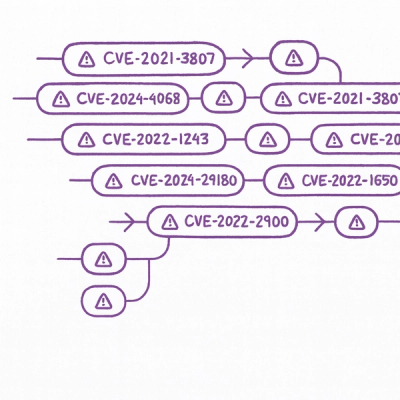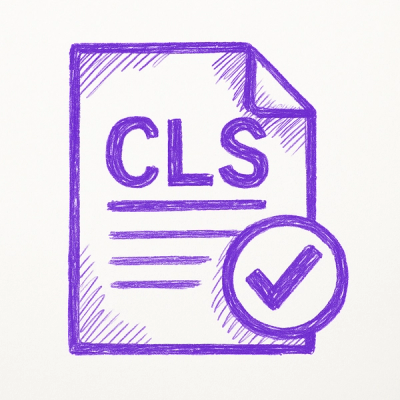
Security News
Astral Launches pyx: A Python-Native Package Registry
Astral unveils pyx, a Python-native package registry in beta, designed to speed installs, enhance security, and integrate deeply with uv.
Add this line to your application's Gemfile:
gem 'graphql-pundit', '~> 0.7.0'
And then execute:
$ bundle
If you're upgrading from an earlier version, make sure to delete your
bootsnap cache, to avoid a load error (see
this issue).
The cache files are usually located in the tmp directory in your
repository and are named bootsnap-compile-cache and
bootsnap-load-path-cache.
graphql-ruby >= 1.8)To use graphql-pundit with the class based API introduced in graphql
version 1.8, the used Field class must be changed:
It is recommended to have application-specific base classes, from which the
other types inherit (similar to having an ApplicationController from which
all other controllers inherit). That base class can be used to define a
custom field class, on which the new graphql-pundit API builds.
class BaseObject < GraphQL::Schema::Object
field_class GraphQL::Pundit::Field
end
All other object types now inherit from BaseObject, and that is all that is
needed to get graphql-pundit working with the class based API.
In case you already use a custom field type, or if you want to use a context
key other than :current_user to make your current user available, you can
include graphql-pundit's functionality into your field type:
class MyFieldType < GraphQL::Schema::Field
prepend GraphQL::Pundit::Scope
prepend GraphQL::Pundit::Authorization
current_user :me # if the current_user is passed in as context[:me]
end
When using this, make sure the order of prepends is correct, as you usually want the authorization to happen first, which means that it needs to be prepended after the scopes (if you need them).
class Car < BaseObject
field :trunk, CarContent, null: true,
authorize: true
end
The above example shows the most basic usage of this gem. The example would
use CarPolicy#trunk? for authorizing access to the field, passing in the
parent object (in this case probably a Car model).
Two styles of declaring fields is supported:
Both styles are presented below side by side.
authorize and authorize!To use authorization on a field, you must pass either the authorize or
authorize! option. Both options will cause the field to return nil if the
access is unauthorized, but authorize! will also add an error message (e.g.
for usage with mutations).
authorize and authorize! can be passed three different things:
class User < BaseObject
# will use the `UserPolicy#display_name?` method
field :display_name, ..., authorize: true
field :display_name, ... do
authorize
end
# will use the passed lambda instead of a policy method
field :password_hash, ..., authorize: ->(obj, args, ctx) { ... }
field :password_hash, ... do
authorize ->(obj, args, ctx) { ... }
end
# will use the `UserPolicy#personal_info?` method
field :email, ..., authorize: :personal_info
field :email, ... do
authorize :personal_info
end
end
true will trigger the inference mechanism, meaning that the method that will be called on the policy class will be inferred from the (snake_case) field name.policypolicy is an optional argument that can also be passed three different values:
class User < BaseObject
# will use the `UserPolicy#display_name?` method (default inference)
field :display_name, ..., authorize: true, policy: nil
field :display_name do
authorize policy: nil
end
# will use OtherUserPolicy#password_hash?
field :password_hash, ...,
authorize: true,
policy: ->(obj, args, ctx) { OtherUserPolicy }
field :password_hash, ... do
authorize policy: ->(obj, args, ctx) { OtherUserPolicy }
end
# will use MemberPolicy#email?
field :email, ..., authorize: true, policy: MemberPolicy
field :email, ... do
authorize policy: MemberPolicy
end
end
nil is the default behavior and results in inferring the policy class from the record (see below)recordrecord can be used to pass a different value to the policy. Like policy,
this argument also can receive three different values:
class User < BaseObject
# will use the parent object
field :display_name, ..., authorize: true, record: nil
field :display_name do
authorize record: nil
end
# will use the current user as the record
field :password_hash, ...,
authorize: true,
record: ->(obj, args, ctx) { ctx[:current_user] }
field :password_hash, ... do
authorize record: ->(obj, args, ctx) { ctx[:current_user] }
end
# will use AccountPolicy#email? with the first account as the record (the policy was inferred from the record class)
field :email, ..., authorize: true, record: Account.first
field :email, ... do
authorize record: Account.first
end
end
nil is again used for the inference; in this case, the parent object is usedUsing record can be helpful for e.g. mutations, where you need a value to
initialize the policy with, but for mutations there is no parent object.
before_scope and after_scopebefore_scope and after_scope can be used to apply Pundit scopes to the
fields. Both options can be combined freely within one field. The result of
before_scope is passed to the resolver as the "parent object", while the
result of after_scope is returned as the result of the field.
class User < BaseObject
# will use the `PostPolicy::Scope` before the resolver
field :posts, ..., before_scope: true
field :posts, ... do
before_scope
end
# will use the passed lambda after the resolver
field :comments, ..., after_scope: ->(comments, args, ctx) { ... }
field :comments, ... do
after_scope ->(comments, args, ctx) { ... }
end
# will use the `FriendPolicy::Scope`
field :friends, ..., after_scope: FriendPolicy
field :friends, ... do
after_scope FriendPolicy
end
end
true will trigger the inference mechanism, where the policy class, which contains the scope class, is inferred based on either the parent object (for before_scope) or the result of the resolver (for after_scope).before_scope) or the result of the resolver (for after_scope), the field arguments and the contextScope class (this does not actually have to be a policy class, but could also be a module containing a Scope class)All options can be combined with one another (except authorize and authorize!; please don't do that). Examples:
# MemberPolicy#name? initialized with the parent
field :display_name, ..., authorize: :name,
policy: MemberPolicy
# UserPolicy#display_name? initialized with user.account_data
field :display_name, ..., do
authorize policy: UserPolicy,
record: ->(obj, args, ctx) { obj.account_data }
end
define APIThe legacy define based API will be supported until it is removed from the
graphql gem (as planned for version 1.10).
Add the following to your GraphQL schema:
MySchema = GraphQL::Schema.define do
...
instrument(:field, GraphQL::Pundit::Instrumenter.new)
...
end
By default, ctx[:current_user] will be used as the user to authorize. To change that behavior, pass a symbol to GraphQL::Pundit::Instrumenter.
GraphQL::Pundit::Instrumenter.new(:me) # will use ctx[:me]
For each field you want to authorize via Pundit, add the following code to the field definition:
field :email do
authorize # will use UserPolicy#email?
resolve ...
end
By default, this will use the Policy for the parent object (the first argument passed to the resolve proc), checking for :email? for the current user. Sometimes, the field name will differ from the policy method name, in which case you can specify it explicitly:
field :email do
authorize :read_email # will use UserPolicy#read_email?
resolve ...
end
Now, in some cases you'll want to use a different policy, or in case of mutations, the passed object might be nil:
field :createUser
authorize! :create, policy: User # or User.new; will use UserPolicy#create?
resolve ...
end
This will use the :create? method of the UserPolicy. You can also pass in objects instead of a class (or symbol), if you wish to authorize the user for the specific object.
If you want to pass a different value to the policy, you can use the keyword argument record:
field :createUser
authorize! :create, record: User.new # or User.new; will use UserPolicy#create?
resolve ...
end
You can also pass a lambda as a record. This receives the usual three arguments (parent value, arguments, context) and returns the value to be used as a record.
You might have also noticed the use of authorize! instead of authorize in this example. The difference between the two is this:
authorize will set the field to nil if authorization failsauthorize! will set the field to nil and add an error to the response if authorization failsYou would normally want to use authorize for fields in queries, that only e.g. the owner of something can see, while authorize! would be usually used in mutations, where you want to communicate to the client that the operation failed because the user is unauthorized.
If you still need more control over how policies are called, you can pass a lambda to authorize:
field :email
authorize ->(obj, args, ctx) { UserPolicy.new(obj, ctx[:me]).private_data?(:email) }
resolve ...
end
If the lambda returns a falsy value or raises a Pundit::UnauthorizedError the field will resolve to nil, if it returns a truthy value, control will be passed to the resolve function. Of course, this can be used with authorize! as well.
Pundit scopes are supported by using before_scope and after_scope in the field definition
field :posts
after_scope
resolve ...
end
Passing no arguments to after_scope and before_scope will infer the policy to use from the value it is passed: before_scope is run before resolve and will receive the parent object, after_scope will be run after resolve and receives the output of resolve. You can also pass a proc or a policy class to both _scopes:
field :posts
before_scope ->(_root, _args, ctx) { Post.where(owner: ctx[:current_user]) }
resolve ->(posts, args, ctx) { ... }
end
field :posts
after_scope PostablePolicy
resolve ...
end
After checking out the repo, run bin/setup to install dependencies. Then, run rake spec to run the tests. You can also run bin/console for an interactive prompt that will allow you to experiment.
To install this gem onto your local machine, run bundle exec rake install. To release a new version, update the version number in version.rb, and then run bundle exec rake release, which will create a git tag for the version, push git commits and tags, and push the .gem file to rubygems.org.
Bug reports and pull requests are welcome on GitHub at https://github.com/ontohub/graphql-pundit.
The gem is available as open source under the terms of the MIT License.
FAQs
Unknown package
We found that graphql-pundit demonstrated a not healthy version release cadence and project activity because the last version was released a year ago. It has 1 open source maintainer collaborating on the project.
Did you know?

Socket for GitHub automatically highlights issues in each pull request and monitors the health of all your open source dependencies. Discover the contents of your packages and block harmful activity before you install or update your dependencies.

Security News
Astral unveils pyx, a Python-native package registry in beta, designed to speed installs, enhance security, and integrate deeply with uv.

Security News
The Latio podcast explores how static and runtime reachability help teams prioritize exploitable vulnerabilities and streamline AppSec workflows.

Security News
The latest Opengrep releases add Apex scanning, precision rule tuning, and performance gains for open source static code analysis.